Braided Egg Bread
This light and tender braided egg bread is both beautiful and delicious!
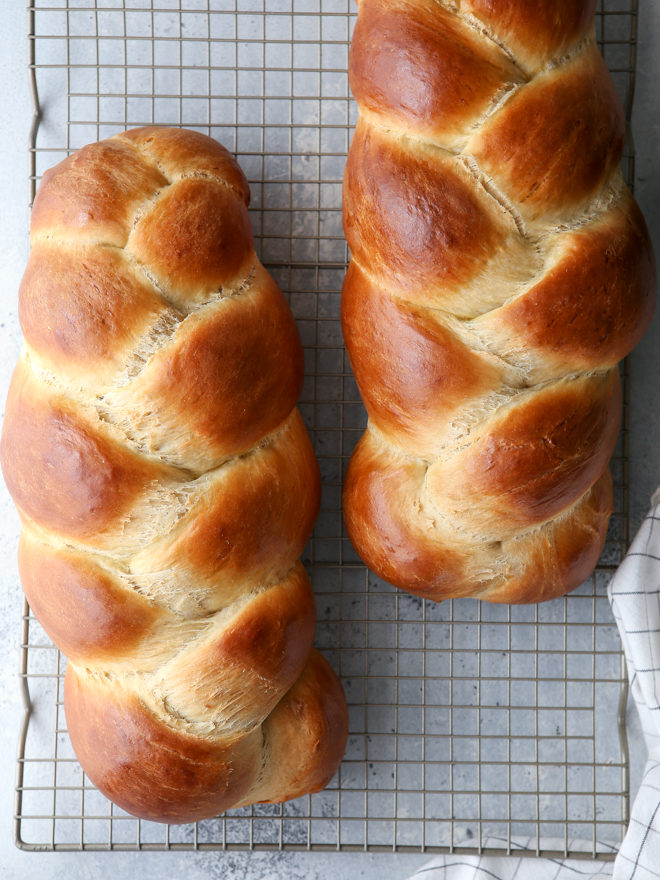
Egg Bread is one of my favorite homemade bread recipes to bake, though I only seem to make it for special occasions. I learned how to make it in culinary school and I’ve been hooked ever since. I mean, have you ever seen a more gorgeous loaf of bread?
This bread is so soft and tender, with a rich and slightly sweet flavor. It’s a wonderful— and stunning— accompaniment to a nice meal, but it also works really well for french toast, bread pudding, and even sandwiches.
If baking a loaf of bread like this makes you nervous, relax! Even though it looks super fancy, it’s not necessarily any more difficult than other bread recipes. I first shared this braided egg bread recipe in 2009, but today I’m giving it a complete overhaul with more information and resources. The recipe is exactly the same though, it’s tried and true!
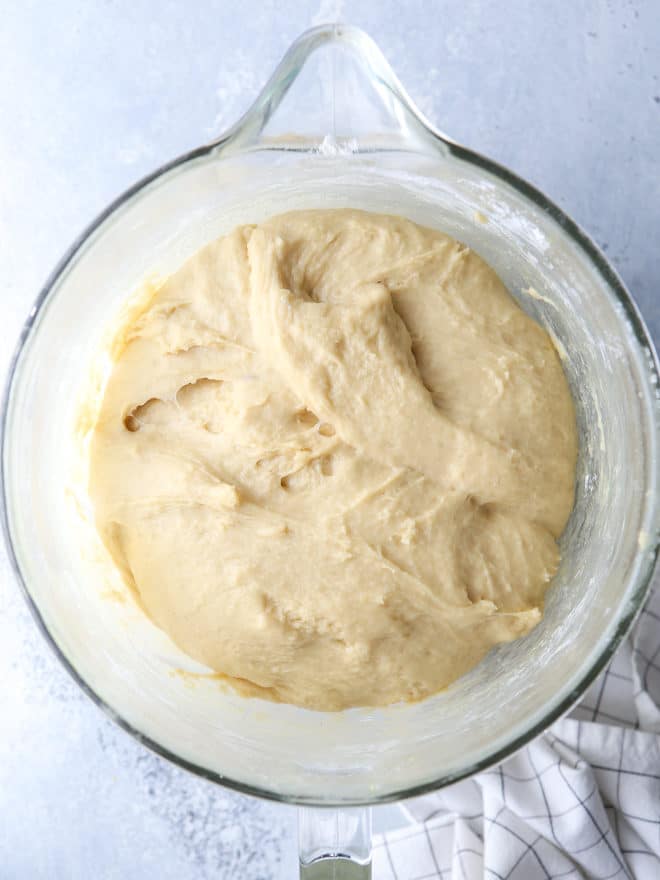
What is Braided Egg Bread?
Egg bread is an “enriched yeast bread”, which means it has a higher fat and sugar content than other yeast breads. It’s made with eggs, butter, honey, bread flour, yeast, salt, and water.
Why do you braid Egg Bread?
Because it’s an enriched dough it is very soft and doesn’t hold its shape well. Braiding the egg bread gives it structure during proofing and baking. You can also bake it in a loaf pan, like brioche or babka, which are also enriched dough recipes.
You can do a simple three-strand braid (as I’ve done here) or a four, five or six-strand braid, and even a round braided loaf if you’d like. Follow the links for very helpful online video tutorials that will walk you through how to make each of these shapes. Don’t be intimidated, it really is quite easy!
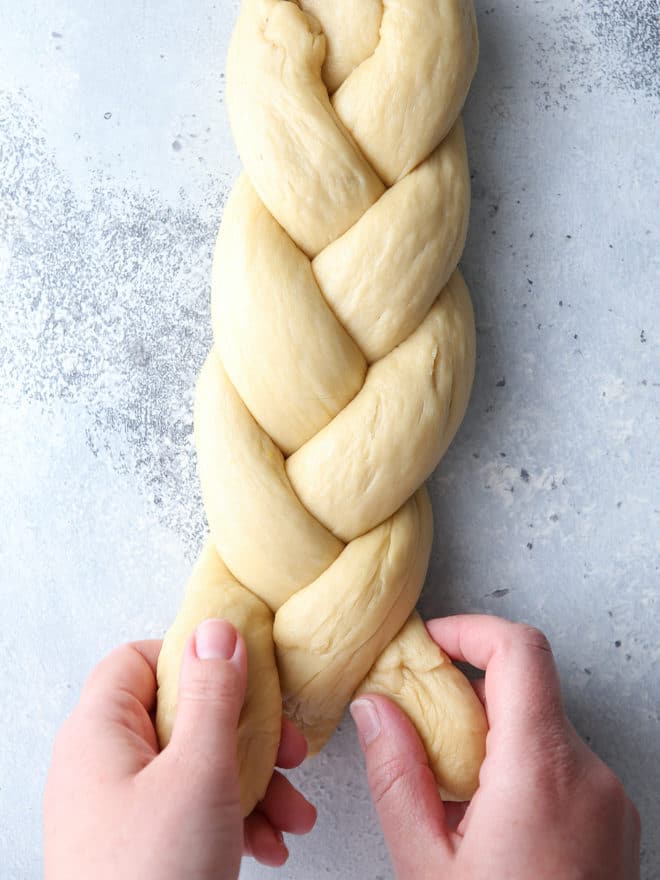
Can Egg Bread be Made Ahead?
Absolutely! Freshly baked bread always tastes the best, so here are a few tips for doing the work ahead of time:
- Let the braided loaf rise in the fridge overnight. When ready to bake, let it come to room temperature first.
- Freeze unbaked braided loaf for up to 1 month or more. Make sure that it’s double-wrapped in plastic. When ready to bake, let thaw in the fridge overnight, then let it come to room temperature and rise before sliding into the oven.
- Freeze baked braided loaf for up to 1 month of more. You can freeze the whole loaf or a few slices. Again, make sure that it’s double-wrapped in plastic. To thaw and serve, unwrap and heat in a 325°F oven for 20-25 minutes for the full loaf, or 5 minutes for a slice. Do not let the bread thaw at room temperature or it could actually cause it to go stale.
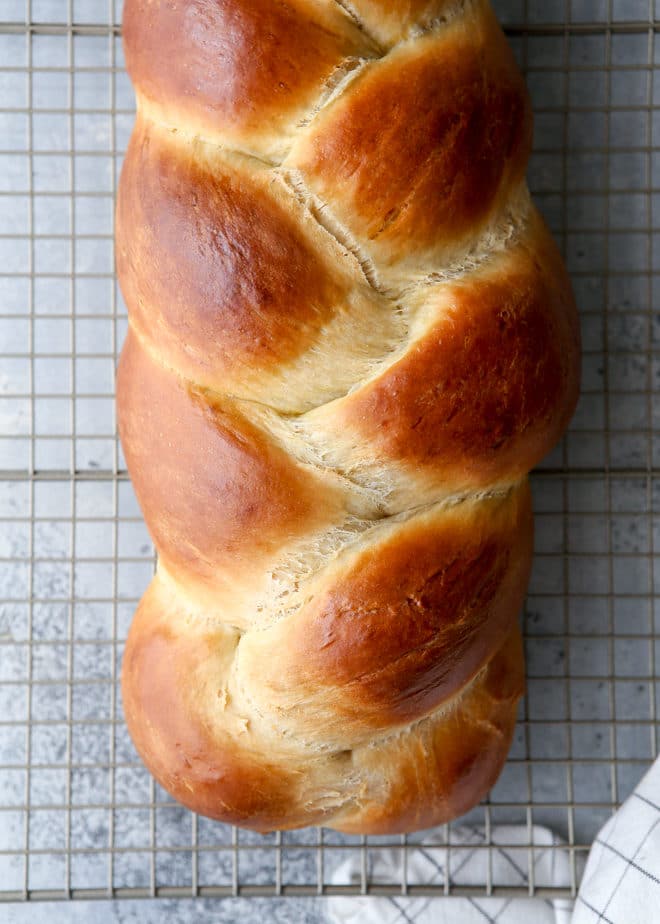
Bread baking tips
Just in case you need a little extra help baking a successful loaf of bread, here are a few resources:
- What is bread flour?
- How do you know when bread is done baking?
- Tips for rising and proofing bread dough
- Will yeast dough rise in the fridge?
- Why do you punch down risen yeast dough?
- Tips for storing yeast
You might like these other enriched dough recipes
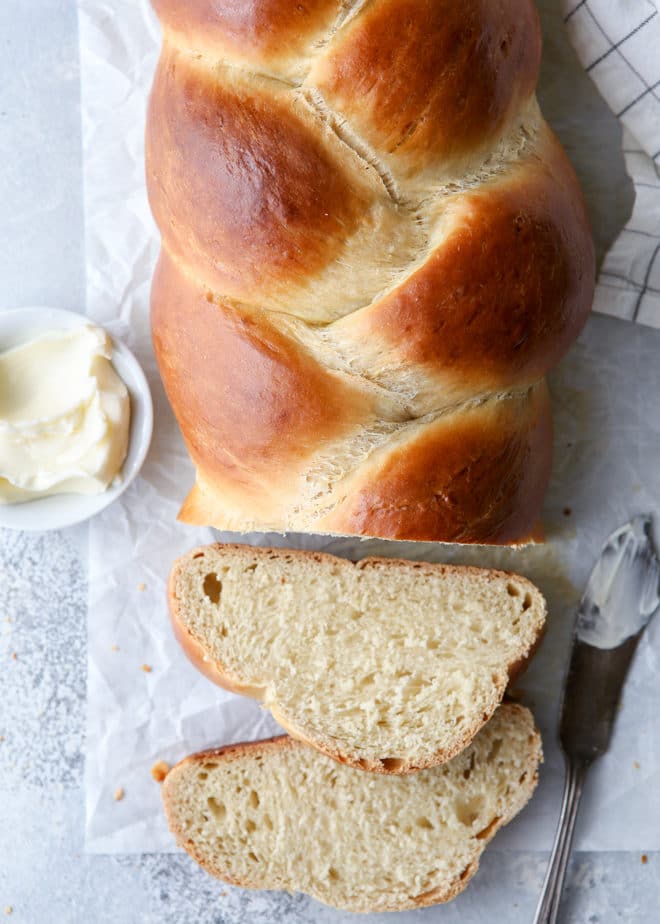
Shop tools for this recipe
Note: this recipe was originally published February 2009.
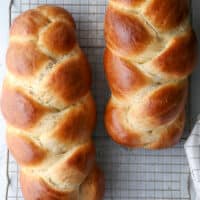
Braided Egg Bread
Ingredients
- ½ cup unsalted butter (113 grams), melted
- ¾ cup honey (255 grams)
- 1 cup water (250 ml)
- 1 teaspoon salt
- 5-6 cups bread flour (600-720 grams), divided
- 1 envelope active dry yeast (2 ¼ teaspoons)
- 4 large eggs
- 1 egg , for egg wash
Instructions
- Melt butter in a small saucepan over low heat. Add honey and water and heat to 120-130°F, or until very warm but not too hot to the touch.
- Add 3 cups of the flour, salt and yeast to the bowl of a stand mixer. Add butter mixture and eggs and mix until it forms a very wet dough.
- With the mixer fitted with a dough hook on medium speed, add the remaining flour 1/4 cup at a time. You may not need all 6 cups of the flour, or you may need more. Use only enough dough to achieve a dough that is moist and sticky, but does not actually stick and come off on your hands when handled.
- Knead the dough until smooth and elastic, another few minutes more.
- Place dough in lightly greased bowl, cover and let rise in a warm place until doubled, about 1 to 1 ½ hours.
- Punch down dough and divide into 6 equal portions. On a clean un-floured surface, roll each portion into rope-like pieces approximately 18 inches long. Work with 3 ropes at a time to braid into two loaves, pinching and tucking the ends under.
- Place dough on parchment paper lined sheet pans. Cover with plastic wrap and let rise until doubled again, about 45 minutes.
- Whisk together egg and brush onto loaves. Bake at 350°F until loaves are golden brown and sound hollow when thumped, approximately 40 minutes. Cool completely before slicing.

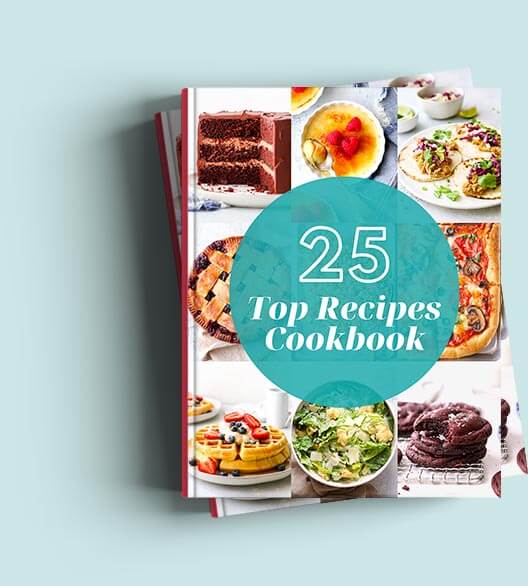
They have this bread in Poland, and it was one of my favorites while I was there. It only cost 1 zlot (25 cents) for a fresh loaf baked daily. In Polish it is called chałka (procounced how-ka).
I thought I’d never get to taste the stuff again since I’ve never seen it in an American bakery. Thanks for the directions!
Comment 1: Can this be made into knots or rolls?
Comment 2: I couldn’t find a printer friendly version.
Hi
What type of utensil did you use to cut this bread and how thick are the slices.
I use a serrated knife to cut bread, works really well. I think these are about 1 inch slices.
Hi Annalise
Did you use a ruler to get every slice the same thickness.
Nope, I just eyeball it.
On step three, the instructions say, “add the remaining butter.” I assume you actually mean the remaining flour?
I followed the recipe, but my bread is not rising.
Hmmm could your yeast be expired? Or perhaps the liquids were heated too warm? Temps over 140 degrees F kill yeast.
In step 4, are you kneading by hand or with the dough hook?
You can knead either way! I like to multitask so I always use my mixer and dough hook.
You actually can’t l should not call this challah bread due to that butter added. Challah is sn important part of Jewish culture. It’s supposed to be kosher and butter isn’t kosher. This is a brioche recipe.
Hello! I have a little insight I wanted to share because a) I am Jewish, b) Challah baking is very important to me and my spiritual practice and c) I find it important to grasp cultural nuances when sharing recipes based on other cultures. In the section about why Challah is braided you say “Because Challah is made with extra butter and eggs, the dough is very soft and doesn’t hold its shape well. Braiding the challah gives it structure during proofing and baking.” My feedback here is that traditional Challah is not braided due to this as it does not use butter at all. Using butter in Challah would, in terms of Kosher law, make it only suitable for dairy meals and could therefore not be eaten with meat. Most Jewish holidays and Shabbat usually involve a meat meal so oil is used instead. Going a step further, it is actually technically against kosher law to make a challah that looks traditional with dairy in the chance that you deceive others into thinking it’s a meat-suitable Challah. Functionally, this law is probably more followed by Jews who practice more traditionally but still is possibly also the reason it is braided in the first place, to distinguish it in look from other breads that use dairy. Hope this helps!
Hi Nick! I learned this exact recipe under the title “Challah bread” in culinary school many years ago and never thought twice about it. Thank you for educating me on my ignorance, your comment was very helpful. I’ve now changed the recipe to remove the label “challah” and instead will just call it braided egg bread.
This is a wonderful recipe. The directions are very clear, easy to follow and easy to make. Best of all, it is absolutely delicious! It is my husband’s favorite. For his birthday he asked for a braided loaf of this bread instead of cake or cupcakes! Thank you so much for this terrific recipe.
Can you just use all purpose flour I don’t have bread flour
Bread can be enjoyed as a nice accompaniment to a meal but also works well with other dishes such as French toast, bread pudding and sandwiches.
Wow…
That bread came out extremely puffy and fluffy dear !!! Loved the way it looks so glossy and spongy !!
hat challah bread is giving me soft to the touch and ready to eat.